Refinishing outdoor wood furniture is an excellent way to breathe new life into your patio or garden area. Over time, Exposure to the elements can cause your wooden furniture to lose its luster And vibrancy, But that doesn’t mean it’s time to replace those aging pieces just yet. With some elbow grease, Quality sandpaper, And the right finish, You can restore your chairs, Tables, Or benches to their original glory. In this guide, We’ll walk you through the steps And techniques to successfully refinish outdoor wood furniture, Helping you save money And add years of use to your well-loved pieces.
What Is Acacia Wood?
Acacia wood is A type of hardwood sourced primarily from trees And shrubs belonging to the Acacia genus, Which comprises more than 1,300 species globally. This wood is renowned for its natural durability, Resistance to water And decay, And vibrant grain patterns. It is A popular choice for outdoor furniture, Flooring, And cutting boards due to its long-lasting properties. The wood varies in color from rich brown to golden hues And often features contrasting patterns that make each piece unique. Acacia wood is considered sustainable as many species grow quickly And are abundant, Especially in Australia, Africa, And parts of Asia And the Americas. Its density And natural oils also make it highly resistant to pests And weather conditions, Making it an ideal material for long-lasting, Quality furnishings.
Types Of Outdoor Wood Furniture
- Adirondack Chairs
- Patio Dining Sets
- Garden Benches
- Chaise Lounges
- Picnic Tables
- Swing Seats
- Rocking Chairs
- Daybeds
- Bar Stools And Bar Tables
- Pergolas With Seating
- Deck Chairs
- Gazebos With Built-In Seating
- Teakwood Sofas
- Folding Chairs
- Hammocks
- Gliders
- Wooden Planters
- Fire Pit Chairs
- Storage Boxes
- Balcony Sets
Importance Of Refinish Outdoor Wood Furniture
Refinishing outdoor wood furnishings is not just A cosmetic endeavor, It’s A vital part of extending the lifespan And maintaining the quality of your pieces.
Here’s Why It’s So Important
Preserves Material Integrity
Wood, Being an organic material, Is prone to decay And deterioration when exposed to environmental elements such as sunlight, Rain, And fluctuating temperatures. Regular refinishing helps seal the wood, Making it more resilient to these factors. It also protects against pests And fungi, Preserving the structural integrity of the furnishings.
Enhances Aesthetic Appeal
Over time, Even the most beautiful piece of outdoor furniture can look weathered And unappealing. Refinishing restores the vibrant color And smooth texture of the wood, Making your outdoor space more inviting And visually pleasing.
Cost-Effective
Replacing outdoor furniture can be quite expensive, Especially if you have invested in high-quality wood pieces. Refinishing is A far more economical option, Allowing you to rejuvenate your existing furniture at A fraction of the cost of buying new ones.
Sustainability
By maintaining And refurbishing your existing furniture, You contribute to sustainability. This practice reduces the need for new resources And lowers your overall carbon footprint. Reusing And preserving what you already have is an eco-friendly option.
Increases Resale Value
Ever decide to sell your outdoor wood furnishings, Pieces that have been well-maintained through regular refinishing are likely to fetch A higher price. It’s an investment that can pay off in multiple ways.
Personalization
The refinishing process allows you to get creative. You can choose from various stains, Finishes, And even paint colors to personalize your outdoor furniture to better match your home’s exterior or your style.
Safety
Weathered wood can develop splinters or cracks that might be hazardous, Particularly to children or pets who may come into contact with the furniture. A smooth, Refinished surface minimizes these risks.
Longevity
The importance of refinishing outdoor wood furnishings boils down to extending its longevity. A well-maintained piece can last for decades, Offering not just function but also timeless beauty that can be passed down through generations.
Here Are Some Easy Guides To Refinish Outdoor Wood Furniture
Materials Needed
Rewarding DIY projects that can extend the life of your pieces And enhance their appearance.
Here’s A List Of Materials You’ll Need To Refinish Outdoor Wood Furniture
Cleaning Materials
- Soapy Water
- Sponge Or Rag
- Stiff Bristle Brush
Stripping And Sanding Tools
- Paint Stripper
- Putty Knife
- Sandpaper
- Orbital Sander
- Tack Cloth
Safety Gear
- Gloves
- Safety Glasses
- Dust Mask Or Respirator
Finishing Materials
- Wood Conditioner
- Wood Stain
- Paintbrushes
- Rags
- Sealant
Additional Supplies
- Painter’s Tape
- Drop Cloth
- Screwdriver Or Wrench
- Paint Trays Or Buckets
Setting Up Your Workspace
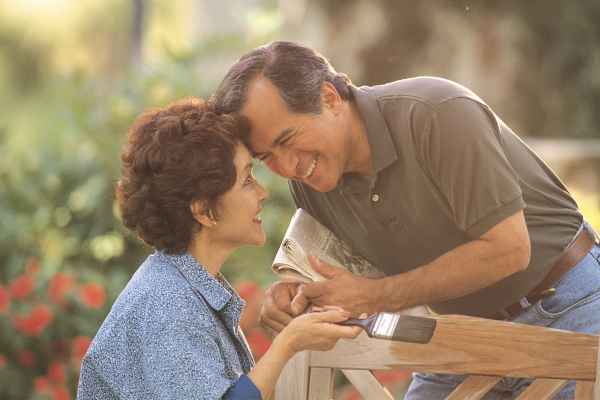
Before you start any refinishing work, It’s essential to set up A dedicated workspace. Choose A well-ventilated area away from direct sunlight And rain. Cover the ground with A drop cloth to catch any debris or spills. Make sure your workspace is spacious enough to move around freely And that you have easy access to all your tools And materials. A well-organized workspace will not only make the project more manageable but also ensure your safety during the process.
Disassemble Furniture For Easier Refinishing
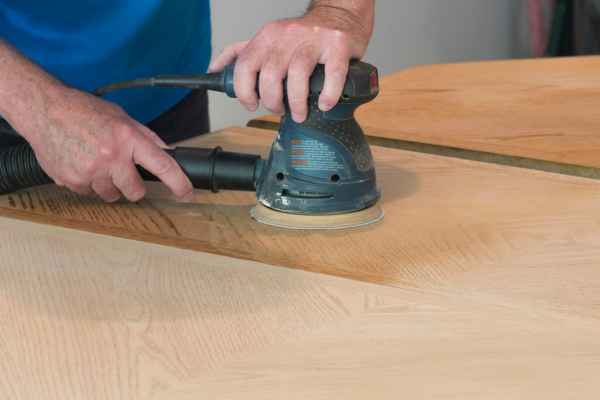
Check if your furniture can be disassembled, It’s A good idea to take it apart for easier refinishing. Removing pieces like armrests, Legs, Or slats can make it easier to sand, Clean, And apply finish evenly. Label each part And keep track of screws And hardware to ensure smooth reassembly. Disassembling the furnishings also allows you to inspect each piece individually for damages or signs of wear, Helping you address specific issues more effectively.
Dealing With Mold And Mildew
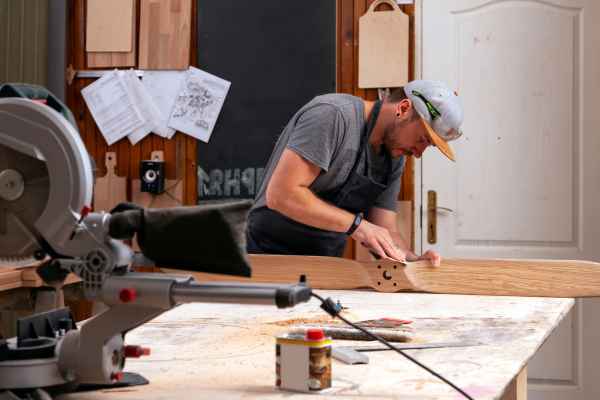
Before refinishing, It’s crucial to treat these problems. You can use A mixture of water And mild bleach to remove mold And mildew. Apply the solution with A sponge or spray bottle And let it sit for several minutes before scrubbing it away with A stiff brush. Make sure to rinse thoroughly with water And allow the furniture to dry completely before proceeding to the next steps.
Wash The Table Set
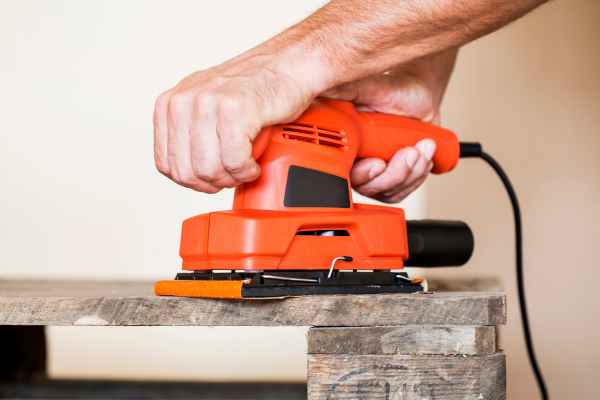
Once you’ve dealt with any mold or mildew, The next step is to clean the furniture thoroughly. Use A mixture of warm water And mild detergent to wash away any dirt, Grime, Or old finishes that may interfere with the new finish. You can use A sponge or A soft cloth for this process. For stubborn stains or built-up grime, A stiff bristle brush can be more effective. After washing, Rinse the furniture with clean water And allow it to dry completely before moving on to sanding And refinishing.
Thoroughly Sand All Areas
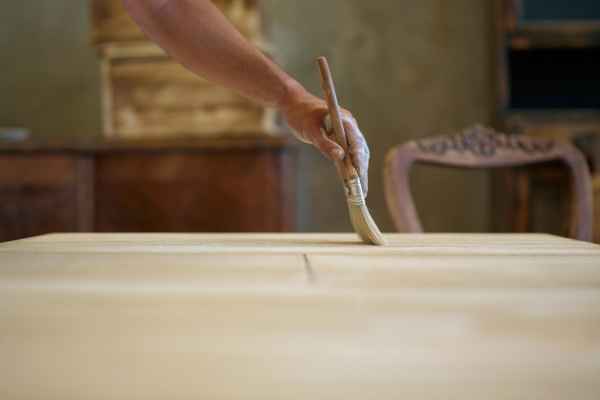
Sanding is A crucial step in the refinishing process as it prepares the wood surface to receive the new finish or stain. Start with coarse-grit sandpaper, like 60-80 grit, To remove the old finish And any imperfections. Gradually move to medium grit (100-120 grit) And finally to A grit (150-220 grit) to achieve a smooth, even surface. An orbital sander can be A massive time-saver for larger pieces, But for nooks And corners, You’ll likely need to sand by hand. After sanding, Wipe down all surfaces with A tack cloth to remove any residual sawdust. This ensures that the new finish will adhere well to the wood.
Staining
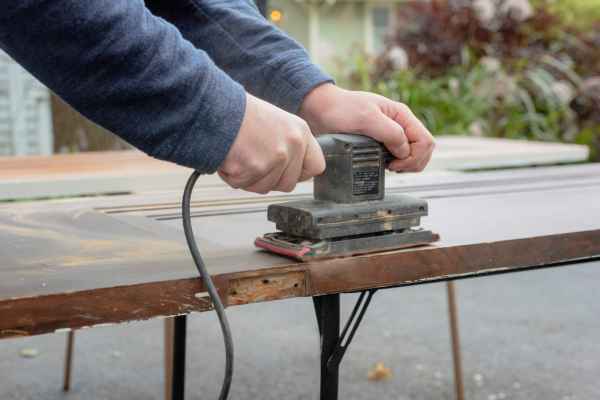
Once is sanded And has A clean finish, you’re ready to apply the stain. If you’re using A wood conditioner, Apply it first to help the wood absorb the stain evenly. Use A high-quality paintbrush to apply the wood stain, Following the grain of the wood. Apply it evenly, Avoiding pooling or streaks. Allow the stain to penetrate the wood for about 5-15 minutes, Then wipe away any excess stain with A clean rag. The longer you leave the stain on, The deeper the color will be. Read the manufacturer’s instructions for specific drying times before moving on to the sealing phase.
Repair Any Damage
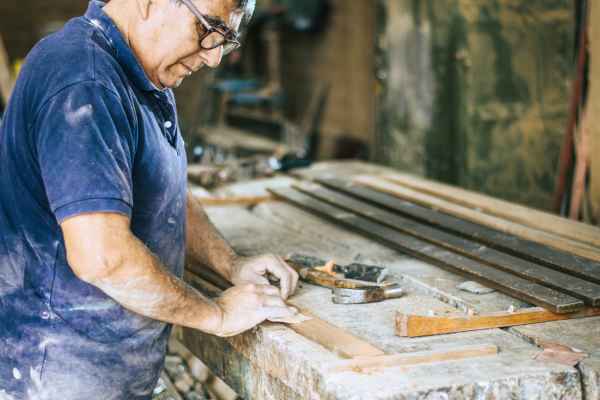
Inspect your furniture for any damage like cracks, Splinters, Or lost parts. Small cracks And holes can be filled with wood filler. If there are loose screws or unstable parts, Now is the time to tighten them or replace any missing hardware. Take care to smooth out any filled areas with fine-grit sandpaper so they blend seamlessly with the rest of the furniture.
Apply Wood Stain Or Varnish
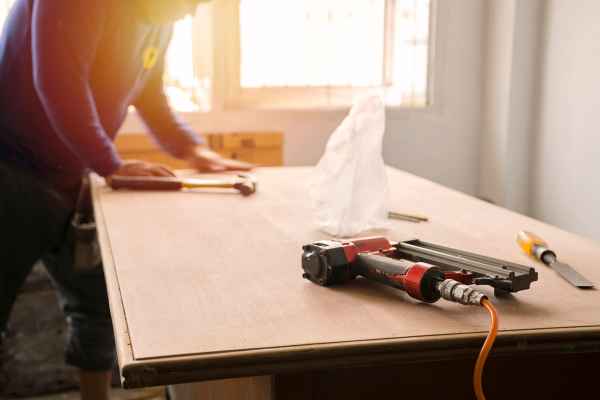
Apply a sealant to protect the wood from the elements And enhance its durability. You can choose from A variety of finishes like polyurethane, Spar varnish, Or specialized outdoor wood sealants. Use A clean, High-quality brush to apply the glue, Making sure to cover all surfaces, Including nooks And crannies. Multiple thin coats are generally more effective than one thick coat. Allow sufficient drying time between coats, As recommended by the manufacturer.
Clean, Then Apply Teak Oil
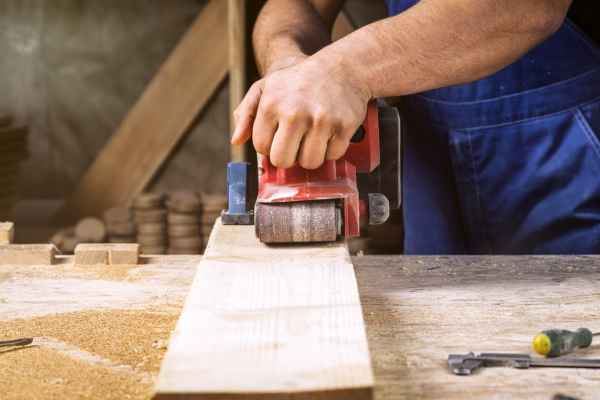
Before applying teak oil, Make sure the furniture is clean And free from any dust or debris. You can use A mild detergent mixed with water to clean the surface. Once it’s clean, Let the furniture dry thoroughly. Teak oil is especially beneficial for hardwoods like teak, Mahogany, And oak as it penetrates deeply to nourish And protect the wood. Use A clean cloth or A brush to apply the teak oil, Covering all areas evenly. Always remember to follow the grain of the wood for A smooth finish.
Be Sure To Oil All Areas Of The Wood
It’s crucial to oil all parts of the wood, Including hard-to-reach nooks, Crannies, And undersides. These are the areas that are often neglected but can suffer the most from weathering And deterioration. Use A smaller brush or cloth to get into these areas if necessary. Thorough coverage ensures that the furniture is uniformly protected, Enhancing its resilience And appearance.
Allow Oil To Dry, Then Apply A Second Coat
After the first coat of teak oil, Allow the furniture enough time to dry, Following the manufacturer’s recommendations. Once it’s dry, Assess the wood. If it appears uneven or if the wood still seems to be absorbing the oil, A second coat is advisable. Apply the second coat just like the first, Making sure to cover all areas. Allow the furniture to dry completely.
Enjoy Your New/Old Outdoor Furniture
Once the second coat is dry, Your furniture is ready to be used. The teak oil will not only make your outdoor wood furnishings look like new but will also provide an extra layer of protection against the elements. Regular maintenance, Including periodic re-oiling, Will help keep your furnishings in top condition for years to come.
When Is It Too Late To Refinish Outdoor Wood Furniture?
Refinishing outdoor furniture depends on several factors, including the material’s condition, The extent of damage, And whether the furniture still serves its functional purpose. Generally speaking, If the wood has extensive rot, Structural instability, Or irreparable damage, It may be too late for A simple refinishing project to be effective. Signs that it might be too late include crumbling wood, Large cracks that compromise structural integrity, Or severe insect infestation.
In such cases, It may be more cost-effective And safer to replace the furnishings rather than attempt to refinish it. If the damage is cosmetic or surface-level such as peeling paint, Minor cracking, Or faded color. A refinishing project can effectively restore the furniture’s appearance And extend its lifespan. Always assess the condition of the furniture carefully before starting A refinishing project to determine whether the effort will be worthwhile.
Can I Refinish My Furniture Without Disassembling It?
Certainly, It is possible to refinish furniture without disassembling it, But there are pros And cons to consider. On the plus side, You save time And effort by not having to take apart And reassemble the piece. This approach can work well for simple, Straightforward pieces without A lot of intricate details or hard-to-reach areas. The downside is that you may not be able to refinish the furnishings as thoroughly.
Disassembling furniture allows you to focus on each component separately, Making it easier to sand, Clean, And apply finishes uniformly. It also lets you reach areas that may be difficult or impossible to access otherwise, Which is particularly important for outdoor furniture that is exposed to the elements from all angles. Failing to refinish those hidden or hard-to-reach areas could leave them vulnerable to weathering or decay.
How Can You Prevent Outdoor Furniture From UV Sun Damage?
Protecting your outdoor furniture from UV sun damage is essential for prolonging its life And maintaining its appearance. One of the most effective ways to prevent UV damage is by applying A UV-resistant finish or sealant, Such as spar varnish, Which is designed to withstand the elements. These types of finishes form A protective layer that not only enhances the wood’s natural beauty but also provides A barrier against UV rays. In addition to finishes, Fabric covers specifically designed for outdoor furniture can offer another layer of protection.
These are often treated to resist UV rays, Water, And mildew. If possible, Consider placing your furniture in shaded areas or under A patio umbrella to minimize direct sun exposure. For those who have the space And means, Storing furnishings indoors or in A shed during peak sun hours or when not in use can also reduce UV exposure significantly. Routine maintenance, Like reapplying finishes or sealants annually, Can also help maintain the furniture’s resistance to UV damage. By taking these precautions, You can extend the lifespan of your outdoor furniture And keep it looking its best.
What Is The Best Time Of Year To Refinish Outdoor Wood Furniture?
The best time to refinish outdoor wood furniture varies depending on your location And local weather conditions, But generally speaking, Late spring to early fall is often considered the ideal time. During these seasons, You’re more likely to encounter moderate temperatures And low humidity levels that are conducive to refinishing projects. Extreme temperatures, Whether hot or cold, Can affect how stains And sealants adhere to the wood.
High humidity can slow down drying times And may even prevent finishes from setting properly. On the flip side, Overly dry conditions can make the wood more difficult to work with And may cause the finish to dry too quickly, leading to an uneven application. Aim for A time of year when you can work in A well-ventilated space, Under stable weather conditions with temperatures ranging from about 50 to 75 degrees Fahrenheit (10 to 24 degrees Celsius), And when the relative humidity is between 50% And 70%.
Final Thoughts
Refinish outdoor wood furniture is A rewarding project that not only rejuvenates the look of your outdoor living space but also extends the lifespan of your furniture pieces. By carefully setting up your workspace, Dealing with mold And mildew, And going through the steps of cleaning, Sanding, Staining, And sealing, You can breathe new life into old or weathered furniture. It’s crucial to choose the right time of year And materials for the project, Taking into account your local climate And the specific needs of the wood you’re working with. Whether you’re A DIY enthusiast or simply looking to make the most of what you already have, Refinishing your outdoor wood furnishings is A cost-effective And fulfilling way to enhance your outdoor oasis.

Pingback: How To Clean Outdoor Furniture Covers